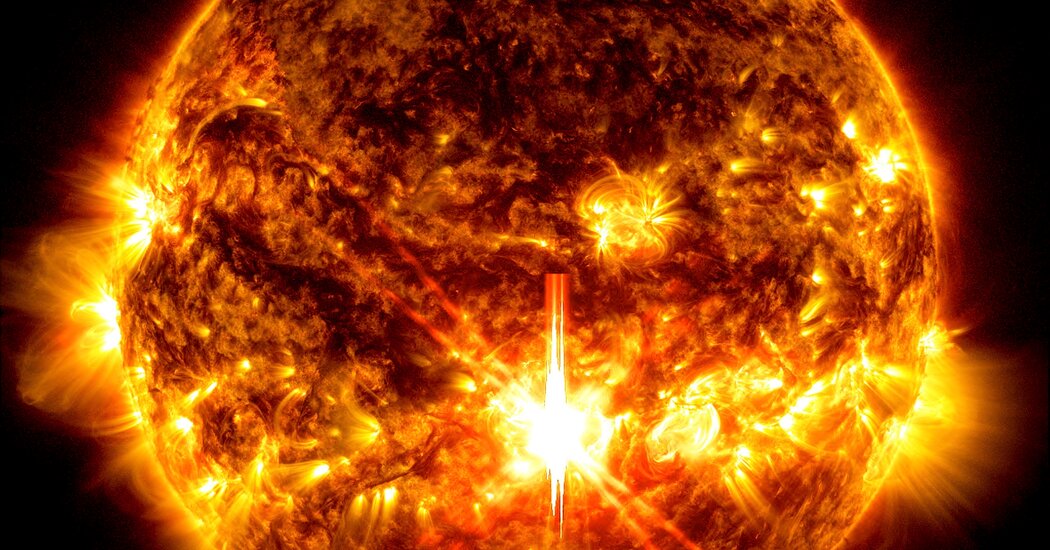An explosion of particles is expected to reach Earth on Thursday, and could lead to visible Northern Lights in much of the country while also raising power grid concerns.
Periodically, the sun spews out gigantic eruptions of particles into the solar system. Sometimes, when the solar eruptions are aimed right at Earth, the particles may create brilliant auroras in night skies in many parts of the planet. Then there are other occasions when the battering can damage satellites, mangle GPS signals and knock out power grids.
On Wednesday, a federal center issued a space weather severe storm watch after sun-watching spacecraft observed a large solar flare emanating from a sunspot in the sun’s northern hemisphere, accompanied by an explosion of particles known as a coronal mass ejection.
“The concerning thing here is that it was right in the center of the sun,” Shawn Dahl, the service coordinator for the Space Weather Prediction Center, which is part of the National Oceanic and Atmospheric Administration, said during a news conference Wednesday afternoon.
If the eruption was right in the center of the sun, that meant at least part of it was probably aimed right at Earth. It looked big enough to cause potential disruptions. The barrage could also result in Northern and Southern Lights being visible on Thursday evening, reaching much closer to the Equator than usual.
This was the second such watch, which is the space weather equivalent of a hurricane watch, to be issued by the center in the past 19 years.
The first, in May, put the United States on alert for a severe solar storm that appeared to be on its way to Earth. That solar storm reached the highest level of “extreme,” but the early warning allowed electrical utilities to prepare and helped prevent major outages.
